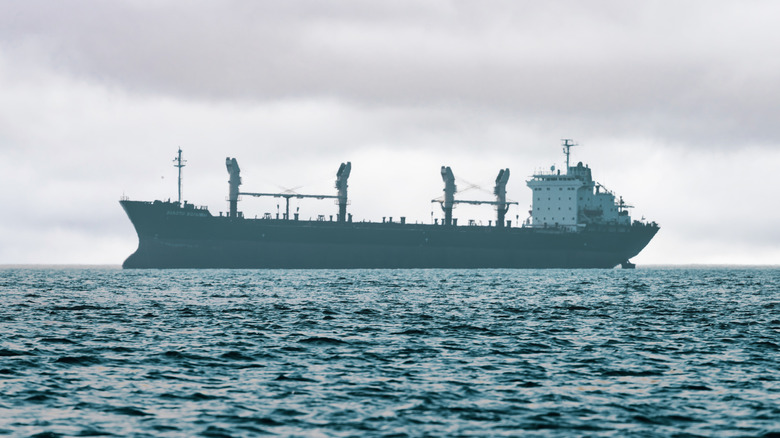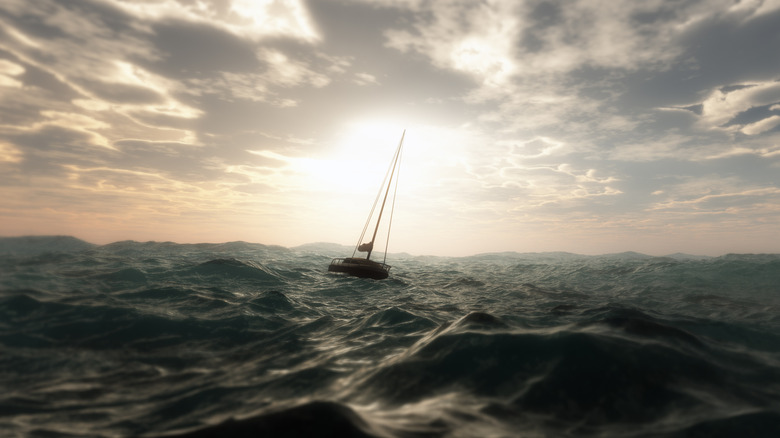Why Ships Can't Anchor In The Middle Of The Ocean (And What They Do Instead)
The average depth of the ocean is around 12,080 feet. While there are vessels of all sizes, even some of the largest anchor and chain systems, like those found on carriers, only stretch to around 1,080 feet long, well short of what's needed in the middle of the ocean. And the correct chain length is essential, since even if the anchor can reach the ocean floor, if too little chain is left a ship can actually drag its anchor around.
One way vessels such as yachts can help stabilize and slow their movement in deep water is using a sea anchor. A sea anchor doesn't need to contact the ocean floor to work. In fact, it looks and behaves like a parachute under the surface. Once deployed, not only can a sea anchor keep a vessel pointed in a consistent direction, but it can halt much of the drifting that would typically befall a ship that's not active in the water.
Larger examples like cruise ships can utilize a sophisticated dynamic positioning technology, which takes control of their means of propulsion and continually works to keep the ship in one place. Sensors can pick up changes in the water, the ship's movement, and even wind, forming data that the dynamic positioning system uses to calculate a counterforce to those environmental influences.
Why would a vessel need to stop in the middle of the ocean?
The ocean is incredibly vast, stretching thousands of miles between continents. That distance is one reason a vessel might be stopped out at sea, simply to refuel. While filling your car up with gas only takes a few minutes, a massive cargo vessel might require hours to replenish its fuel tank, and you wouldn't believe how much fuel a cruise ship holds or what it costs to refuel it.
A severe storm could also halt a ship, particularly if winds were especially strong, reducing its stability. A powerful weather system can transform calm waters into dangerous conditions that include massive waves. Depending on the scenario, a ship may be forced to slow down or even come to a full stop to prevent damage and protect the crew. If stopped during a storm, a sea anchor becomes crucial for smaller yachts, because it can keep the vessel pointed into the prevailing weather.
Even in shallower waters, anchoring isn't always an option
While the open ocean doesn't allow anchoring due to water depth, even in areas where a ship's chain is long enough, certain requirements must be met. For example, the composition of the seabed is crucial when anchoring. Sand is considered to offer the best hold, where as mud is problematic and could lead to a ship dragging its anchor.
While you may think that dropping anchor is a simple process, other factors must be calculated beyond what makes up the seabed. The angle of the chain or rope from the vessel down to the sea floor can affect how well the ship holds position. Essentially, the greater the angle, the weaker the anchor's gripping strength.
The crew must also evaluate what's under the water, such as a wreck, underwater cables, or other hazards. A foul anchor is a situation when an anchor becomes tangled up with something on the ocean floor. While it's possible to disconnect and leave a foul anchor, due to the cost of replacing one (particularly on something like the largest oil tanker in the world), cutting it loose is a last resort.


